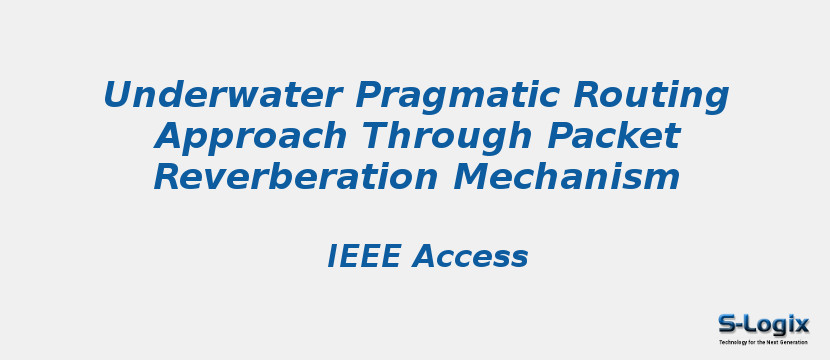Research Area: Wireless Sensor Networks
The advances in underwater sensor communication has become imperative getting up-to-date information about underwater happenings, especially when world has already faced the calamity like Tsunami. The underwater environment possessed freak and unpredictable movements which becomes more harsh time to time. The sensor nodes deployed under such juncture are the main source of information which in fact, facing numerous challenges. These nodes are mainly energy-constrained and rely on limited battery source. Due to most intricated underwater routing architecture, the biggest detriment is the limited battery lifespan. Therefore, it is imperative to adopt the pragmatic and possible alternate to improve the life expectancy of these sensor nodes. The solution of such shortcomings and identifying the varieties of impingements impelled by forwarding node on battery lifespan during packet transmission course are meticulously explored by developing an Underwater Pragmatic Routing Approach through Packet Reverberation mechanism (UPRA-PR). It is a novel approach and never considered in past. Through Packet Reverberation technique, the use of energy has been confined and the desired outcomes are achieved in four phases. In the first phase, the eligibility criteria for both packet and nodes have been computed by setting the Node Depth Factor ($ ext{N}_{mathrm {df}}$ ). Second phase formulates the forwarding relay node mechanism and rummage out the path failure by complying a Data Rate criterion $D_{0}$ . The selection of the shrewd communication link is established in third phase by considering an Accepted Link Quality (ALQ) factor. The fourth phase where most prominent developments has been made regarding impingements effects on the battery lifespan left by the forwarding node after the packet transmission. The UPRA-PR performance metrics are assessed by staging extensive NS2 simulation with AquaSim 2.0 and compared to state-existing routing protocols i.e., DBR, H 2 DAB, GEDAR and FBR for Packet dissemination ratio, Path failure, Point-to-point delay estimation, System energy consumption, Network lifespan, Forwarding node impingement and Network throughput. The simulation results have ratified the UPRA-PR performance and justified the statements made in this respect.
Keywords:
Author(s) Name: Dan Tang; Ye Feng; Siqi Zhang; Zheng Qin
Journal name: IEEE Transactions on Reliability
Conferrence name:
Publisher name: IEEE
DOI: 10.1109/TR.2020.3023257
Volume Information: ( Volume: 70, Issue: 3, Sept. 2021) Page(s): 1143 - 1157
